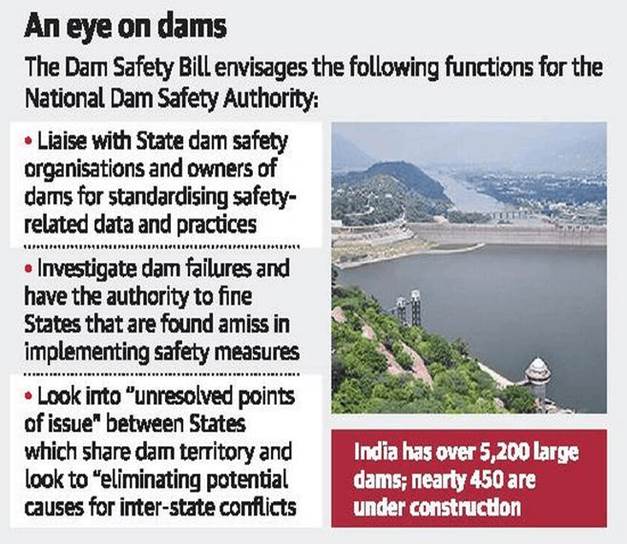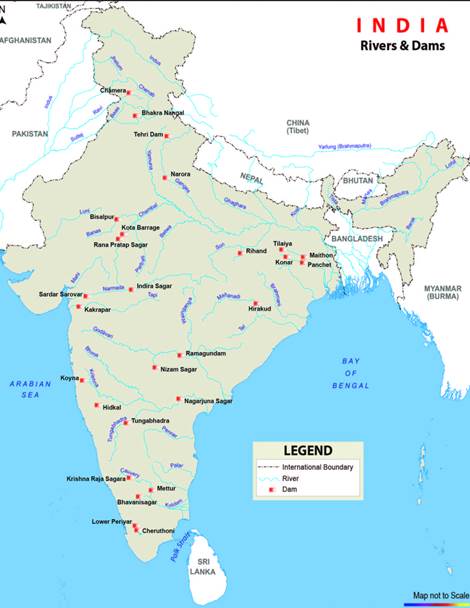DAM SAFETY ACT 2021

Copyright infringement not intended
Context - The Union Government has organized National Workshop on Dam Safety Act, 2021.
Details
- Central Water Commission under the Ministry of Jal Shakti has organized a National Workshop on Dam Safety Act, 2021 in New Delhi.
- The objective of the workshop is to sensitize all stakeholders about the Dam Safety Act of 2021 and to promote dam safety governance in the country.
- There are more than 5200 existing large dams in India, and more than 450 large dams are under construction.
- Maharashtra has the highest number of dams.
- Madhya Pradesh at 2nd and Gujarat at 3rd place.
- In India, dams store about 300 billion cubic meters of water annually.
- Indian dams are ageing;
- More than 80% of dams exceed 25 years of age.
- More than 227 dams exceed 100 years of age.
Dam Safety Act, 2021
- The Dam Safety Act was enacted by Parliament in 2021.
- The main objective of the act is to provide a mechanism for the surveillance, inspection, operation, and maintenance of all specified dams across the country.
- The Act constitutes 2 National bodies:
- The National Committee on Dam Safety.
- National Dam Safety Authority.
- It also constitutes 2 State bodies:
- State Committee on Dam Safety.
- State Dam Safety Organization.
- These state-level bodies are responsible for the surveillance, inspection, and monitoring of the operation and maintenance of dams within their jurisdiction.
- The functions of the National Committee on Dam Safety;
- Developing policies and recommending regulations regarding dam safety standards in India.
- The function of the National Dam Safety Authority;
- To implement the policies of the National Committee on Dam Safety.
- To provide technical assistance to State Dam Safety Organizations (SDSOs).
- Resolving matters between SDSOs of states or between an SDSO and any dam owner in that state.
- An offence can lead to imprisonment of up to 2 years, a fine, or both.
- The Act applies to all specified dams built on both inter and intra-state rivers.
- Dam owners will be liable for the safe construction, operation, maintenance and supervision of a dam. They need to provide a dam safety unit in each dam.
- The Dam safety unit will inspect the dams:
- Before and after the monsoon season.
- During and after every earthquake, flood, calamity, or any sign of distress.
- They will prepare an emergency action plan.
- They will conduct risk assessment studies at regular intervals.
- They will prepare a comprehensive dam safety evaluation.
Significance of Dams
- Dams act as an artificial barrier to rivers.
- They are used to store river water and help in irrigation, power generation, flood moderation, and water supply.
- Dams higher than 15 m or between 10 m and 15 m in height and fulfil certain conditions are called large dams.
- They are mainly operated by states; a few of them are under central public sector undertakings and private agencies.
- As a large amount of river water is stored behind a dam, and its failure can cause large-scale damage to life and property. Therefore, it is essential to monitor the safety of the dam safety is essential.

Copyright infringement not intended
https://www.pib.gov.in/PressReleasePage.aspx?PRID=1834094
https://t.me/+hJqMV1O0se03Njk9



1.png)
